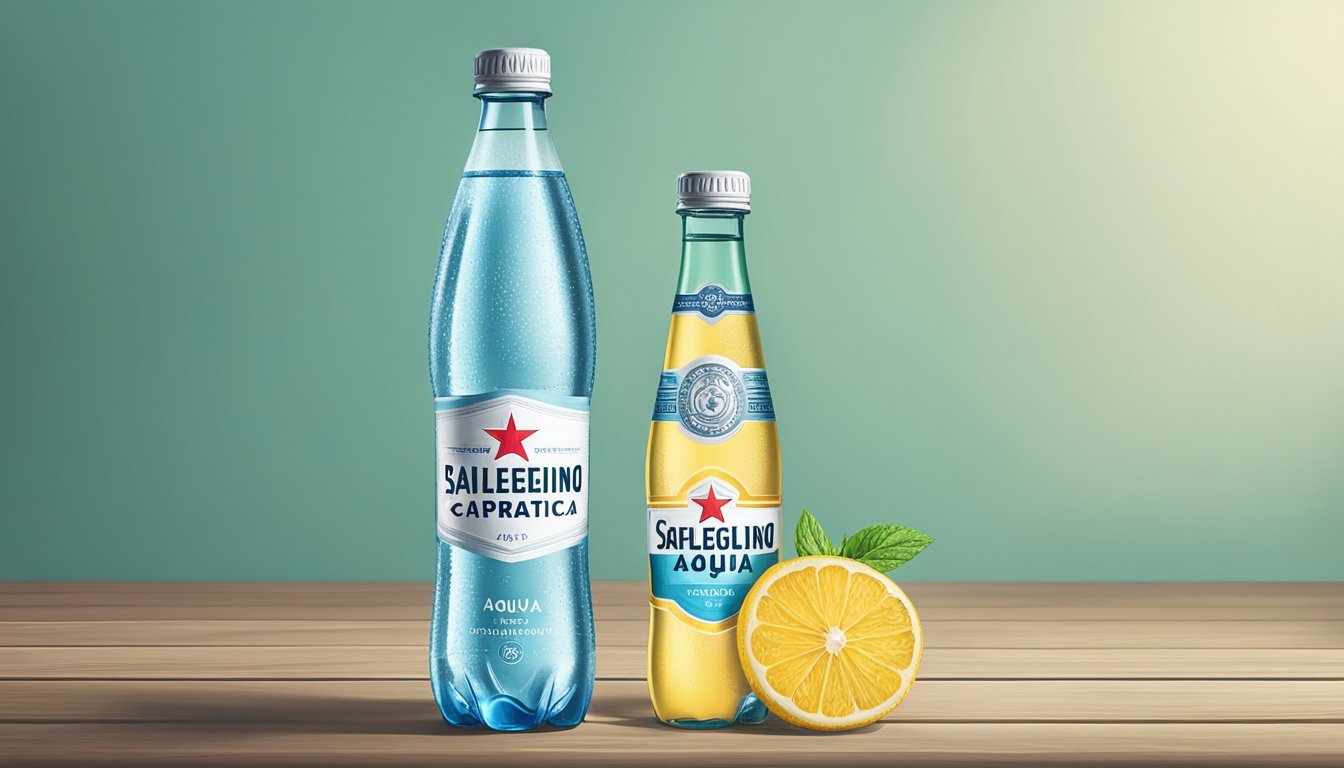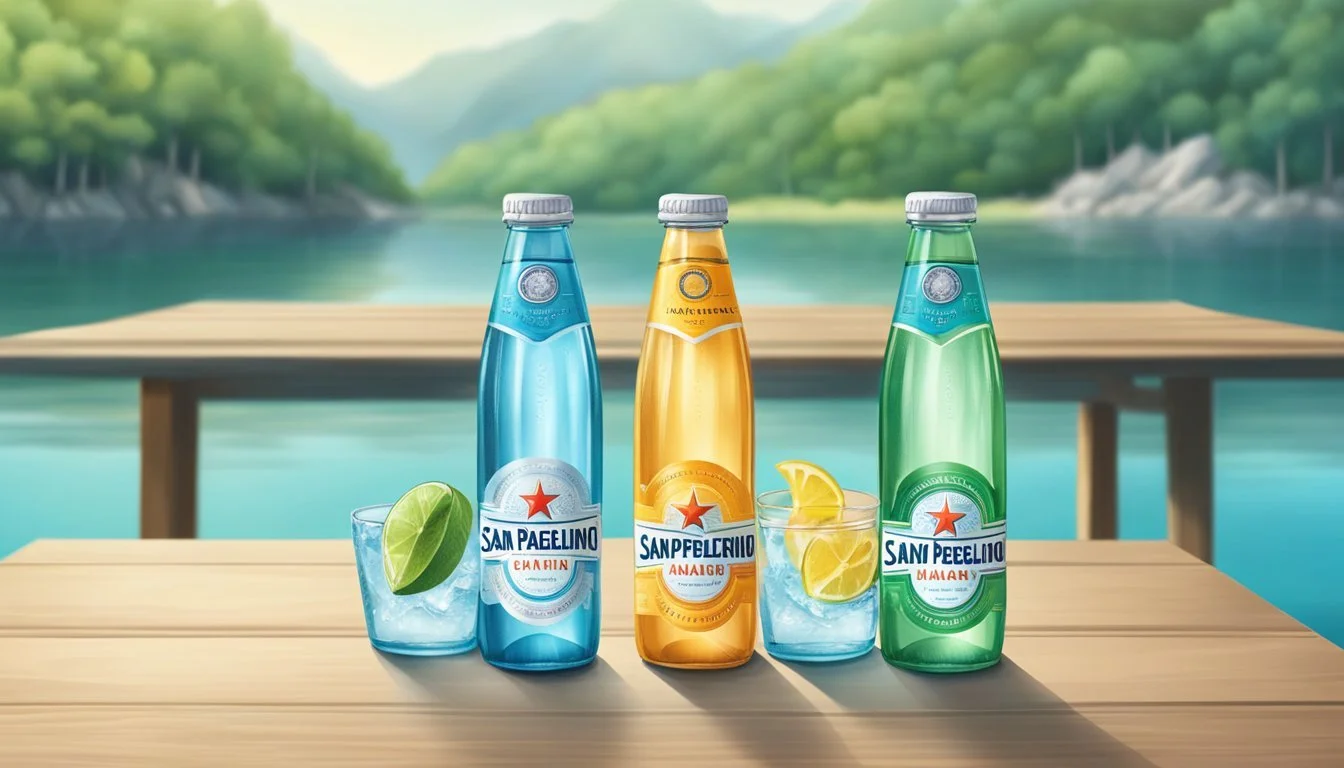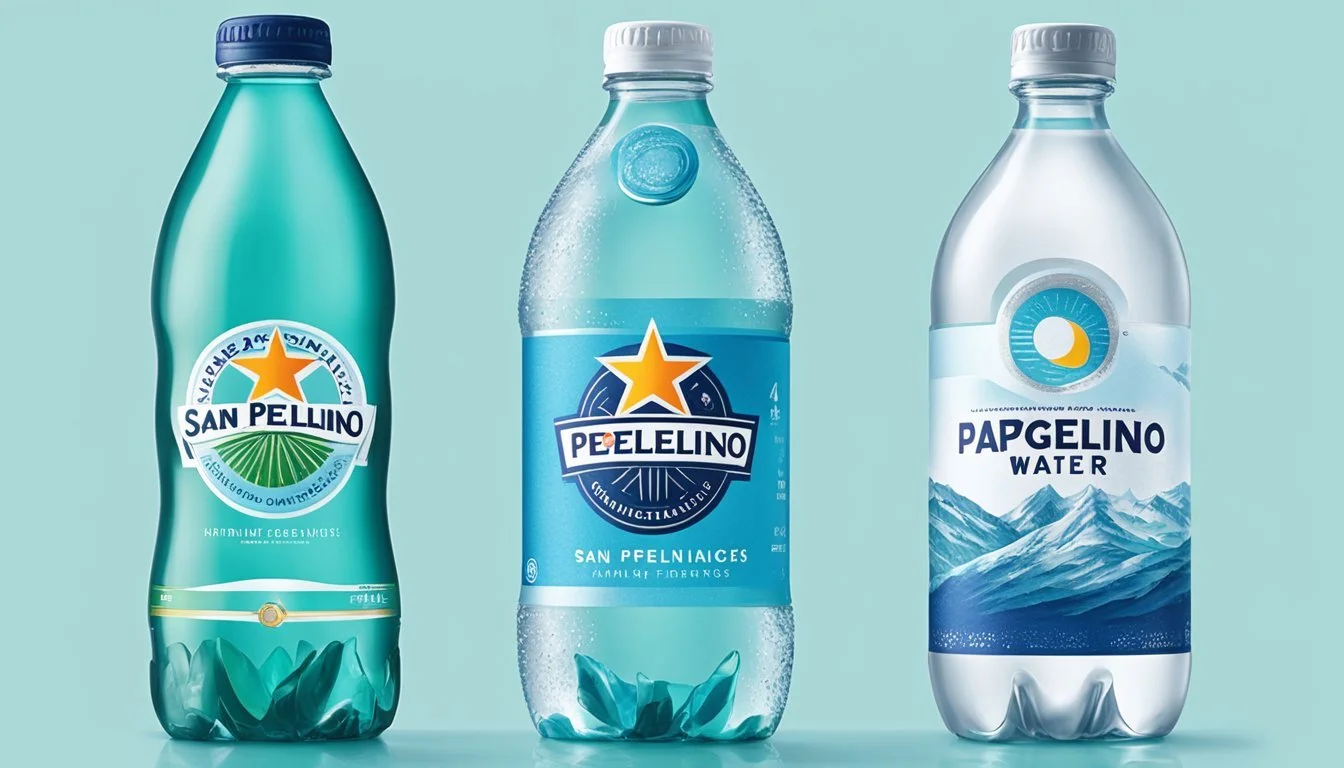San Pellegrino vs. Aqua Carpatica
A Comparative Analysis
In the world of bottled water, San Pellegrino and Aqua Carpatica stand out as two premium brands that promise a refreshing experience. San Pellegrino, sourced from the foothills of the Italian Alps, is well-known for its fine bubbles and slightly bitter taste due to its unique mineral composition. On the other hand, Aqua Carpatica, hailing from the Carpathian Mountains, offers a purer taste with its naturally low sodium content and high bicarbonate levels.
When comparing the two, the key difference lies in the mineral content and carbonation level. San Pellegrino's robust, fizzy profile makes it an excellent choice for pairing with rich meals, enhancing the dining experience. Aqua Carpatica, with its crisp and clean taste, appeals to those seeking a refreshing hydration option without the strong mineral flavor.
For those who prioritize taste and texture in their bottled water, San Pellegrino's signature sparkle and mineral-rich profile may be the favored choice. Conversely, Aqua Carpatica's commitment to pure, naturally sourced water with minimal sodium makes it an attractive option for health-conscious consumers.
Understanding Bottled Water
Bottled water has become a staple for many consumers, offering various benefits such as convenience and perceived purity. It encompasses multiple types, is subject to stringent regulatory standards, and has a diverse market, ranging from budget options to premium brands.
Types of Bottled Water
There are several types of bottled water, each with unique characteristics. Still water includes natural spring water and purified water, which are typically free of carbonation. Sparkling water or sparkling mineral water contains dissolved carbon dioxide, which provides a fizzy texture. Brands like San Pellegrino fall into this category.
Mineral water is sourced from mineral springs and contains various minerals naturally found in the source, contributing to its taste and potential health benefits. In contrast, purified water undergoes processes like distillation or reverse osmosis to remove impurities and contaminants.
Regulatory Framework
The quality and safety of bottled water are governed by stringent regulations. In the United States, the FDA sets standards that bottled water must meet, similar to the EPA's regulations for tap water. These standards cover purity, mineral content, and permissible levels of contaminants.
Bottled water companies must label their products accurately, specifying the source and any treatment methods used. International brands must comply with the regulations of the country where they are sold, which ensures a consistent standard of quality and safety.
Market Overview
The bottled water market is diverse, catering to various consumer needs and preferences. Premium brands like San Pellegrino and Aqua Carpatica offer higher price points, emphasizing quality, purity, and sometimes unique health benefits. Sparkling water brands are particularly popular in fine dining and among those who prefer a fizzy option.
Still waters like Aqua Carpatica are praised for their low mineral content and purity. Market trends indicate a growing demand for health-conscious and eco-friendly options. Conveniently available in supermarkets and specialized stores, the market sees a constant influx of new brands and products to meet consumer demands.
Brands in Focus
San Pellegrino and Aqua Carpatica both have a rich history and unique origins that contribute to their brand identity. These factors play a crucial role in shaping the perception and appeal of each bottled water.
History of San Pellegrino
San Pellegrino originates from the small town of Pellegrino Terme, located in the Italian Alps. Founded in 1899, this brand has a long tradition of tapping into natural spring water. The water is renowned for its sparkling quality and mineral richness.
The unique mineral composition is attributed to its source in the Italian Alps. San Pellegrino has become a staple in fine dining establishments across the globe.
The company meticulously controls the bottling process to ensure that the natural qualities of the water are preserved. Its distinctive effervescence and flavor have made it a preferred choice among many consumers who opt for sparkling mineral water.
History of Aqua Carpatica
Aqua Carpatica is a newcomer compared to San Pellegrino, emerging from the Carpathian Mountains. This region is known for its pristine natural resources. Aqua Carpatica places a strong emphasis on purity, heavily marketing its water as nitrate-free.
Since its introduction, it has gained a significant following, particularly among health-conscious consumers. The water is rich in magnesium and other minerals, sourced from natural springs untouched by pollution.
In a short time, Aqua Carpatica has carved out a niche in the competitive bottled water market by promoting its health benefits. The company's focus on quality and purity resonates with those seeking a natural and beneficial hydration option.
Composition & Source
San Pellegrino and Aqua Carpatica offer distinct profiles, each with unique mineral compositions and natural sources that affect their taste and potential health benefits.
Minerals and Health
San Pellegrino and Aqua Carpatica are rich in minerals essential for hydration and maintaining health. San Pellegrino contains calcium, magnesium, and bicarbonate, providing a slightly acidic pH when it reaches consumers. Aqua Carpatica boasts a high pH level of around 7.8 at source, making it more alkaline and helping maintain a smooth and clean taste. Both waters supply vital minerals, but Aqua Carpatica emphasizes its nitrate-free status, appealing to those seeking purer water options.
Analyzing Water Quality
The water quality of both brands is influenced by their respective sources and mineral content. San Pellegrino's natural carbonation results in a mineral-rich composition that includes moderate levels of sodium and bicarbonate. Aqua Carpatica is known for its exceptional purity, primarily due to its nitrate-free status, which means fewer contaminants. The pH levels also play a crucial role; San Pellegrino has a lower pH of 5.6 when bottled, whereas Aqua Carpatica maintains a more neutral to alkaline pH level, contributing to its refreshing taste.
Natural Sources
San Pellegrino originates from a spring in Italy's picturesque Lombardy region, filtered through limestone and rocks, which enrich the water with minerals like calcium and magnesium. This region is known for its pristine, natural environment. On the other hand, Aqua Carpatica is sourced from the Carpathian Mountains in Romania. This region's aquifers benefit from rainwater filtration through volcanic rocks, providing a pure and uncontaminated source. The geological characteristics of both regions significantly influence the mineral profiles and tastes of these waters.
Packaging and Sustainability
San Pellegrino and Aqua Carpatica have distinct approaches to packaging and their environmental impact. This section examines the materials used and considers the broader environmental implications of each brand's choices.
Material Impact
San Pellegrino typically offers its sparkling water in glass bottles and plastic bottles. Glass bottles are often preferred for their neutrality in taste preservation and recyclability. However, plastic bottles are lightweight and cost-effective, making them a convenient choice for consumers. Aqua Carpatica, on the other hand, emphasizes eco-friendly packaging, mainly using plastic bottles that are BPA-free and recyclable. While Aqua Carpatica's plastic bottles promote better sustainability practices, glass often has a lower impact on taste and preservation of water quality.
Environmental Considerations
Packaging choices significantly affect each brand's environmental footprint. San Pellegrino’s use of predominantly glass bottles means lower risk of microplastic pollution, but the production and transport of glass bottles consume more energy. Their recyclable nature somewhat mitigates this impact. Aqua Carpatica focuses on eco-friendly packaging with recyclable plastic bottles, reducing waste but still contributing to plastic pollution if not properly managed. Additionally, Aqua Carpatica’s efforts towards sustainability may include carbon footprint reduction initiatives, enhancing its appeal to environmentally conscious consumers. Both brands exhibit efforts towards minimizing environmental impact, reflecting a growing industry trend towards sustainability.
Culinary Experience
Both San Pellegrino and Aqua Carpatica offer unique attributes that make them suitable for different culinary contexts. San Pellegrino, with its effervescence, is often favored in fine dining, while Aqua Carpatica's smooth texture and balanced pH make it an excellent choice as a palate cleanser.
Dining and Palate
San Pellegrino's sparkling waters are often chosen for their crisp carbonation, enhancing the dining experience by adding a refreshing quality. This effervescence complements rich, savory dishes, aiding in cleansing the palate between bites. Restaurants frequently serve San Pellegrino alongside gourmet meals to create a balanced contrast, especially in multi-course dining.
Aqua Carpatica, known for its smooth texture and neutral flavor, stands out as a non-intrusive accompaniment. It serves particularly well in fine dining settings where the focus is on subtly flavored or delicate dishes. Its balanced pH and minimal aftertaste make it ideal for pairing without altering the palate's sensitivity.
Water Sommelier's Take
Water sommeliers often recommend San Pellegrino for its vibrant bubbles and slightly salty aftertaste, which can enhance the tasting notes of foods like cheese or charcuterie. It’s a favorite among connoisseurs for events where sparkling waters add an element of sophistication.
On the other hand, Aqua Carpatica is praised for its clean, mineral-rich profile. Water sommeliers highlight its suitability for refined dining experiences where the goal is to cleanse the palate without overpowering it. Its pure nature makes it perfect for pairing with dishes ranging from sushi to light salads.
Consumer Considerations
When deciding between San Pellegrino and Aqua Carpatica, consumers should consider factors such as price, taste profile, and availability.
Price Comparison
Price is a significant factor for many consumers. San Pellegrino is often priced competitively, frequently available in grocery and convenience stores at around $1.50 to $2.00 per bottle. In contrast, Aqua Carpatica tends to be priced higher, often reaching $2.50 to $3.00 per bottle due to its premium positioning.
Both brands may offer bulk purchase options on platforms like Amazon which can reduce the per-bottle cost. Price-conscious consumers might find San Pellegrino to be more affordable for everyday consumption, while Aqua Carpatica is positioned as a high-end product for those willing to spend more for specific qualities.
Taste Profile and Preferences
Taste is subjective and varies widely among consumers. San Pellegrino is well-known for its sparkling water, which has a crisp, effervescent quality appreciated by many. Its mineral salts content provides a distinct, slightly salty taste, enhancing its refreshing properties.
Aqua Carpatica, on the other hand, offers a still water option that is more neutral but features a high level of natural electrolytes. This can aid in digestion and hydration, making it a favorable choice for health-conscious individuals. Due to these differences, personal preference plays a crucial role in determining which brand consumers will favor. Individuals seeking a bold, sparkling experience may lean towards San Pellegrino, while those preferring a clean, still option might opt for Aqua Carpatica.
Availability and Accessibility
The ease of access to these bottled waters varies. San Pellegrino is widely available in many countries, stocked in most grocery stores, convenience stores, and even luxury restaurants. This widespread distribution makes it easy for consumers to find and purchase.
Aqua Carpatica, although premium and slightly less ubiquitous, can also be found in major retail chains and online platforms like Amazon. It might not be as readily available in every convenience store, but its presence in specialized and high-end markets caters to a niche segment. This makes it an accessible option for those willing to seek it out.
Brand Comparisons and Reviews
In comparing San Pellegrino and Aqua Carpatica, attention is paid to factors such as flavor, mineral content, and consumer preferences to help readers make an informed choice between these premium bottled water brands.
Expert and User Reviews
San Pellegrino stands out for its sparkling mineral water with a distinctively crisp flavor. Experts highlight its high mineral content, contributing to its unique taste profile. It is often recommended in fine dining settings and pairs exceptionally well with gourmet dishes. Many users praise it for its consistent quality and refreshing effervescence.
Aqua Carpatica, known for being nitrate-free, is celebrated for its clean and pure taste. Health-conscious consumers enjoy its balanced pH level of around 7.8, which adds to its appeal. User reviews often underscore its smooth, refreshing quality, making it a preferred choice among those avoiding contaminants.
Competitive Landscape
San Pellegrino competes with other premium brands such as Perrier, Acqua Panna, and Voss. Its strong market presence is bolstered by a reputation for excellence dating back to 1899. The brand's high mineral content and sparkling nature offer a distinct alternative among premium waters.
Aqua Carpatica, while less universally known, is gaining traction alongside other purist brands like Fiji and Evian. Highlighting its nitrate-free status, it appeals to a niche market prioritizing health and purity. Its competition includes both mainstream options like Smartwater and Aquafina, and more artisanal choices like Icelandic Glacial and Arrowhead.
More About San Pellegrino
Acqua Panna vs San Pellegrino: Which Bottled Water is Better?
Boxed Water vs San Pellegrino: Which Bottled Water is Better?
Core Hydration vs San Pellegrino: Which Bottled Water is Better?
Ice Mountain vs San Pellegrino: Which Bottled Water is Better?
Icelandic Glacial vs San Pellegrino: Which Bottled Water is Better?
Just Water vs San Pellegrino: Which Bottled Water is Better?
Mountain Valley Spring Water vs San Pellegrino: Which Bottled Water is Better?
Nestle Pure Life vs San Pellegrino: Which Bottled Water is Better?
Poland Spring vs San Pellegrino: Which Bottled Water is Better?
San Pellegrino vs Alkaline88: Which Bottled Water is Better?
San Pellegrino vs Cascade Mountain: Which Bottled Water is Better?
San Pellegrino vs Castle Rock: Which Bottled Water is Better?
San Pellegrino vs CBD Living: Which Bottled Water is Better?
San Pellegrino vs Crystal Geyser: Which Bottled Water is Better?
San Pellegrino vs Crystal Lake: Which Bottled Water is Better?
San Pellegrino vs Essence pH10: Which Bottled Water is Better?
San Pellegrino vs Hawaii Volcanic: Which Bottled Water is Better?
San Pellegrino vs Hawaiian Springs: Which Bottled Water is Better?
San Pellegrino vs Kirkland Signature: Which Bottled Water is Better?
San Pellegrino vs Liquid Death: Which Bottled Water is Better?
San Pellegrino vs Open Water: Which Bottled Water is Better?
San Pellegrino vs Proud Source: Which Bottled Water is Better?
San Pellegrino vs Purely Sedona: Which Bottled Water is Better?
San Pellegrino vs Richard's Rainwater: Which Bottled Water is Better?
San Pellegrino vs Simple Truth: Which Bottled Water is Better?
San Pellegrino vs Smartwater: Which Bottled Water is Better?
San Pellegrino vs Solan de Cabras: Which Bottled Water is Better?
San Pellegrino vs Talking Rain AQA: Which Bottled Water is Better?
San Pellegrino vs Topo Chico: Which Bottled Water is Better?
San Pellegrino vs Weird Water: Which Bottled Water is Better?
San Pellegrino vs Whole Foods 365: Which Bottled Water is Better?
San Pellegrino vs Whole Foods Italian Still Mineral water: Which Bottled Water is Better?
San Pellegrino vs Zephyrhills: Which Bottled Water is Better?
More About Aqua Carpatica
Acqua Pana vs Aqua Carpatica: Which Bottled Water is Better?
Aqua Carpatica vs Alkaline88: Which Bottled Water is Better?
Aqua Carpatica vs Cascade Mountain: Which Bottled Water is Better?
Aqua Carpatica vs Castle Rock: Which Bottled Water is Better?
Aqua Carpatica vs CBD Living: Which Bottled Water is Better?
Aqua Carpatica vs Crystal Geyser: Which Bottled Water is Better?
Aqua Carpatica vs Crystal Lake: Which Bottled Water is Better?
Aqua Carpatica vs Essence pH10: Which Bottled Water is Better?
Aqua Carpatica vs Hawaii Volcanic: Which Bottled Water is Better?
Aqua Carpatica vs Hawaiian Springs: Which Bottled Water is Better?
Aqua Carpatica vs Kirkland Signature: Which Bottled Water is Better?
Aqua Carpatica vs Liquid Death: Which Bottled Water is Better?
Aqua Carpatica vs Open Water: Which Bottled Water is Better?
Aqua Carpatica vs Proud Source: Which Bottled Water is Better?
Aqua Carpatica vs Purely Sedona: Which Bottled Water is Better?
Aqua Carpatica vs Richard's Rainwater: Which Bottled Water is Better?
Aqua Carpatica vs Simple Truth: Which Bottled Water is Better?
Aqua Carpatica vs Solan de Cabras: Which Bottled Water is Better?
Aqua Carpatica vs Talking Rain AQA: Which Bottled Water is Better?
Aqua Carpatica vs Weird Water: Which Bottled Water is Better?
Aqua Carpatica vs Whole Foods 365: Which Bottled Water is Better?
Aqua Carpatica vs Whole Foods Italian Still Mineral water: Which Bottled Water is Better?
Boxed Water vs Aqua Carpatica: Which Bottled Water is Better?
Core Hydration vs Aqua Carpatica: Which Bottled Water is Better?
Ice Mountain vs Aqua Carpatica: Which Bottled Water is Better?
Icelandic Glacial vs Aqua Carpatica: Which Bottled Water is Better?
Just Water vs Aqua Carpatica: Which Bottled Water is Better?
Mountain Valley Spring Water vs Aqua Carpatica: Which Bottled Water is Better?
Nestle Pure Life vs Aqua Carpatica: Which Bottled Water is Better?
Poland Spring vs Aqua Carpatica: Which Bottled Water is Better?
Smartwater vs Aqua Carpatica: Which Bottled Water is Better?
Topo Chico vs Aqua Carpatica: Which Bottled Water is Better?
Zephyrhills vs Aqua Carpatica: Which Bottled Water is Better?






